Last updated on at 07:39 am
Here are the top stuff to do in Florence, Italy. But first, an introduction to Florence or Firenze, as it is called in Italian.
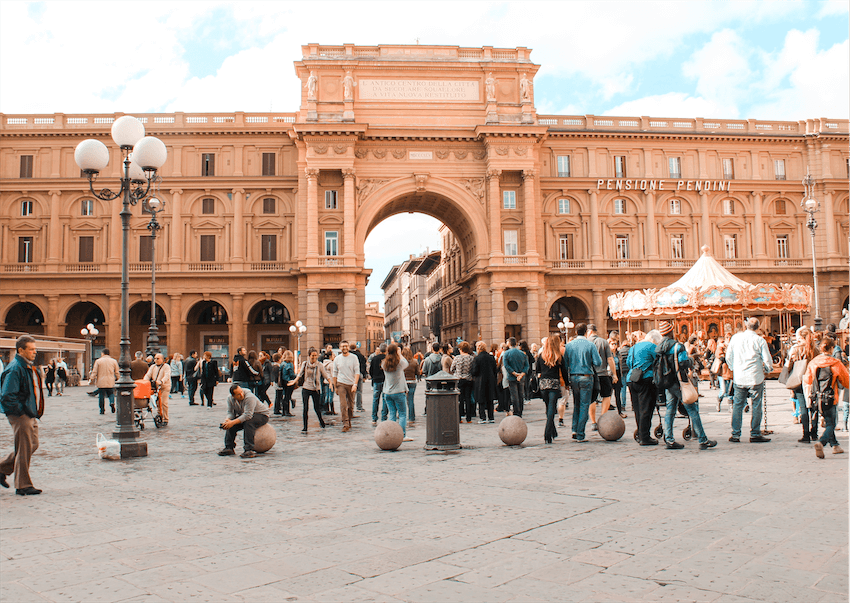
About Florence
Florence is one of Italy’s top destinations. A crowd favorite, tourists flock to this Tuscan capital like ants to anything sweet, and with many great reasons. Not only is it a monument to the Renaissance, the artistic and cultural rebirth in the 15th century, but it is also home to many of the world’s masterpieces of artwork, and just the place to enjoy good food and excellent wine.
What is Florence, Italy best known for?
Florence, Italy is best known for being the birthplace of the Renaissance.
Florence is worth visiting if you’re in Italy. Here are the top stuff to do that makes Florence a must-stop on your Europe itinerary.
Related Posts
Duomo (Basilica di Santa Maria del Fiore)
Located in the heart of Florence, it is difficult to miss the Duomo of Florence or the Florence Cathedral with its fanciful and festive neo-Gothic facade of white, pink and green marble, all topped by an enormous red-brick dome that juts out proudly onto the city’s skyline.
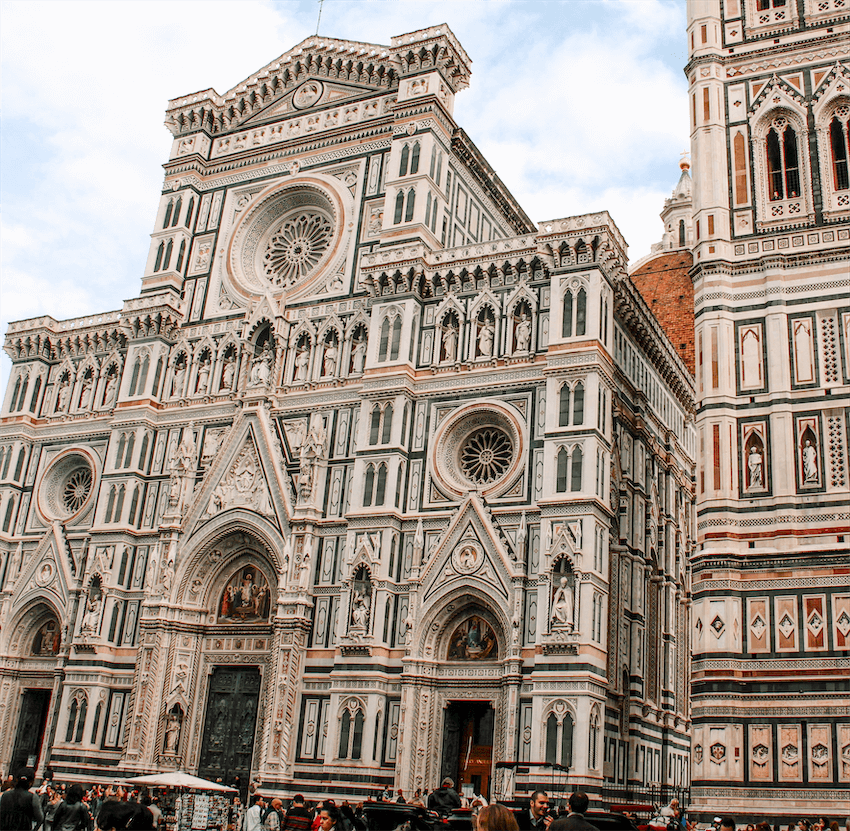
This 18th-century cathedral sits on a busy square and is flanked by its baptistery, bell tower and museum. All four plus the dome offer different interesting and noteworthy things to see. Below is an enumeration in detail.
Duomo’s Dome
Duomo’s 104-meter-tall cupola was finished by the Great Renaissance architect Filippo Brunelleschi whose revolutionary engineering design was decades ahead of its time. This architectural marvel offers spectacular views of Florence when you reach the top after braving its 463 steps.
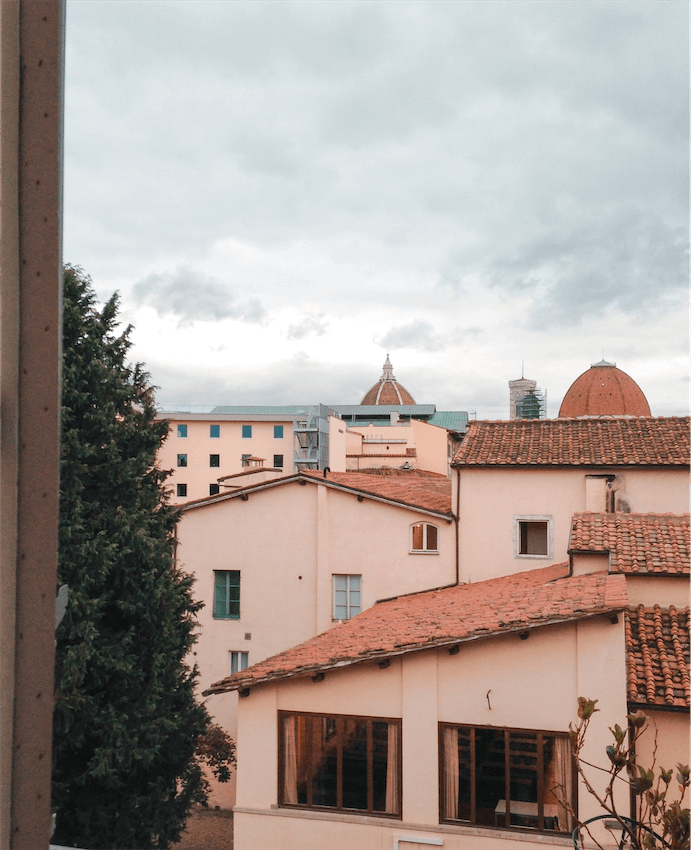
You’ll also find inside: the first Duomo, the remains of the church of Santa Reparata, and some archaeological findings from the Roman Empire.
Bell Tower
The Bell Tower to the cathedral’s right is designed by early Renaissance painter Giotto. Only a part of it, actually, but credit goes to him, still.
This 277-foot-high marble column is called “The Lily of Florence” and has a number of steps that rival that of the dome: 414 steps. Reaching the top doesn’t give you as many extensive views as that of the dome, but you can see the latter from it as well.
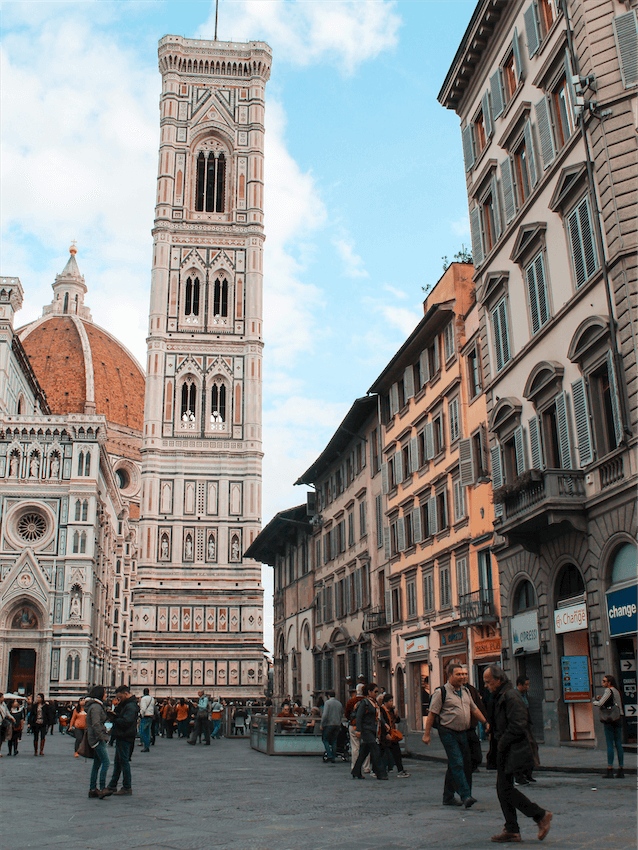
Baptistery
From across the Duomo is the Baptistery, a structure that dates back somewhere between the fourth and seventh centuries. Its highly acclaimed north and east bronze doors are replicas of the originals designed by Lorenzo Ghiberti and dubbed by Michaelangelo as “The Gates of Paradise. They are considered to be some of the most important pieces of Renaissance sculptures. The originals can be found at the Museo dell’Opera del Duomo.
Inside you will find a cone-shaped ceiling depicting the Last Judgement and sparkling 13th-century mosaics.
Museo dell’Opera del Duomo
The Museum of Cathedral Works is found at the back of the cathedral and contains all artworks that were removed from outside the Duomo compound. Included in its collection are the above-mentioned “The Gates of Paradise”, one of Michaelangelo’s Pietas, early Renaissance sculptor Donatello’s Zuccone and Mary Magdalene, and Luca della Robbia’s sculpted marble relief panels.
Also check out the bronze doors to the New Sacristy similarly designed by Luca della Robbia.
Uffizi Gallery
The Uffizi Gallery is an art museum that contains some of the world’s finest works of art, specifically of the Florentine school.
Located in a complex that originally served as government offices in the 16th century (officially a museum in the 18th century), it displays the rise of the Renaissance from the 13th to 18th centuries through masterpieces by Maestà, Giotto, Paolo Uccello, Botticelli (The Birth of Venus), Michaelangelo (The Holy Family), and Leonardo da Vinci (Annunciation, Adoration of the Magi), just to name a few.
Also on display are works by Venetian artists like Bellini and some from Northern European masters like Dürer.
Visiting the Uffizi is one of the pertinent things to do in Florence, Italy.
Galleria dell’Accademia
The Galleria dell’Accademia is another museum of art in Florence, notably famous for being the location of Michaelangelo’s David.
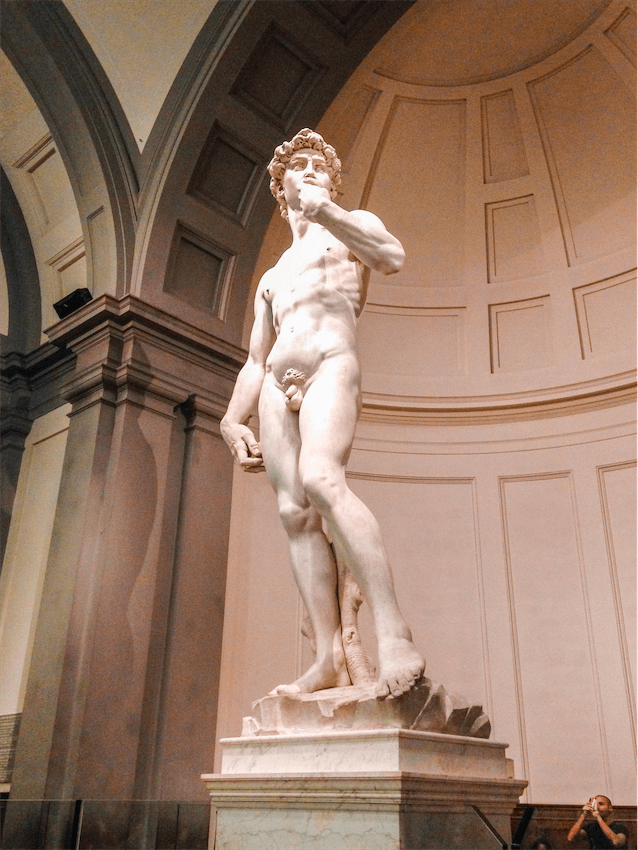
David is a gigantic sculpture depicting a nude male form and one of Michaelangelo’s masterpieces. It was commissioned for one of the buttresses of the Cathedral of Florence and used to stand outside Pallazo Vecchio until 1873 (it was replaced by a replica) when it was moved to the Accademia.
The Accademia also contains other sculptures by Michaelangelo like the Slaves as well as many paintings from the 13th to 16th centuries.
Palazzo Pitti
Palazzo Pitti was once the residence of the Medici Grand Dukes. The Medici was the ruling family of Florence, and later Tuscany, during the 15th to 18th centuries.
Originally built by the Pittis, who were wealthy merchants and rivals of the Medicis, through Brunelleschi and located on the south side of the Arno River, this massive palace now houses several museums, a gallery and the Royal Apartments. Inside can be found many works by Raphael, Tintoretto and Rubens, among others.
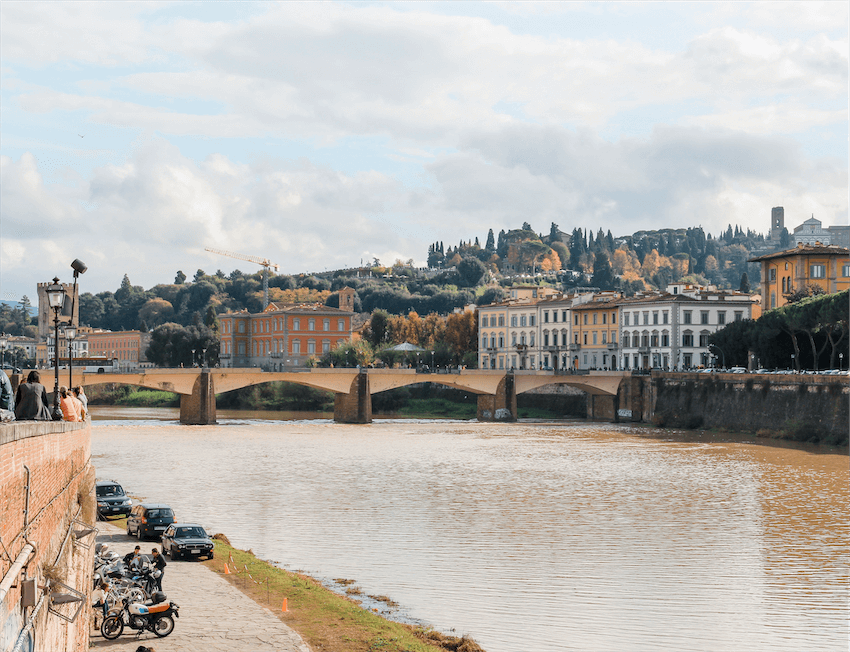
Giardino di Boboli
Behind Palazzo Pitti and up on a hill is an impressively vast garden constructed sometime between the 16th and 17th centuries called the Boboli.
Lush flora and fauna, fountains, grottoes, and classical statues can be found in this grandiose landscape that stretches 11 acres and offers views of Florence at its highest point.
Noteworthy things to see are: the Grotta Garden where you can find Giambologna’s Venus Bathing and Vincenzo de’ Rossi’s Paris with Helen of Troy, among others; the L’Isolotto (Little Island), a garden with a moat containing statues of merrymaking peasants; the amphitheater that used to be the venue for opera performances back in the day.
The Porcelain Museum is also located on the grounds with displays of porcelain art, mostly previously owned by Florentine ruling families of the past like the Medicis and the Savoys. Also in the collection are French Sèvres and Meissen china from Saxony.
It is one of the things to do in Florence, Italy that you should not miss if you’re into gardens, or just to experience a classic example of a well-designed Renaissance garden.
Related Readings
Santa Croce
The Gothic church of Santa Croce of the Franciscan order contains the tombs of famous Florentines like Michaelangelo, astronomer and physicist Galileo Galilei, political philosopher Machiavelli, and composer Rossini. A monument dedicated to the poet and Florence native Dante Alighieri can also be found on-site, though his remains lie in the city of Ravenna.
Inside can be found 14th-century frescoes by Giotto, the forefather of the Renaissance, and his pupil Taddeo Gaddi. Other noteworthy things to see are Donatello’s 15th-century Annunciation, and other frescoes by Giotto in the Bardi Chapel, Baroncelli Chapel and Peruzzi Chapel.
Brunelleschi’s Pazzi Chapel is a fine example of Renaissance architecture that shouldn’t be missed.
Inside the compound can also be found the Museo dell’Opera di Santa Croce, which contains remarkable art pieces like the Crucifix by Cimabue, the sculpture of San Ludovico da Tolosa by Donatello, and the Last Supper by Gaddi.
Bargello Museum
The Bargello Museum is where you go for the finest collection of Renaissance sculptures and a number of excellent Mannerist ones. Their collection includes works of the first great sculptor of the Renaissance, Donatello, and Michaelangelo. Of the former, you’ll see his two versions of a David and a Cupid. A Bust of Brutus, Bacchus, and the Madonna and Child from the latter artist. Works by Flemish artist Giambologna can also be seen, as well as some ceramics, silverware, rugs, and other objects of art.
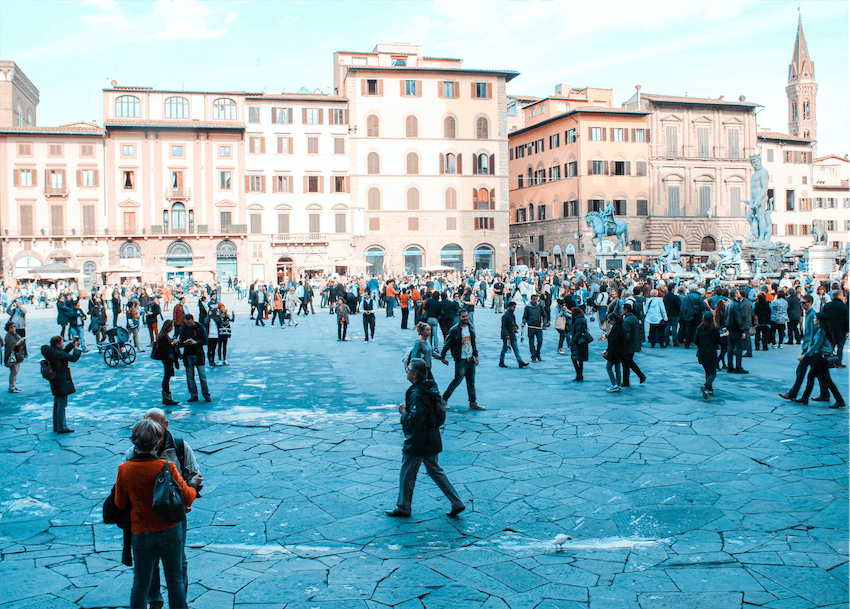
Piazza del Duomo and Piazza della Signoria
When you want to take it easy, spending a relaxing time in the lovely squares of Florence is a great way to do that. Piazza del Duomo and Piazza della Signoria are inviting, scenic, and full of history.
Marvel at the magnificence that is the Florence Cathedral while at Piazza del Duomo, or enjoy some Tuscan delights at one of the cafés in Piazza della Signoria amidst the symbolic statues dotting the area.
For centuries, Piazza della Signoria has been the center of the social and political life of the Florentines. It is where public assemblies were held, and so the statues scattered in the square pay homage to its history. It is in this plaza where Michaelangelo’s David stood before it was moved to a safer location to protect it from the elements. Other important sculptures to watch out for are that of Grand Duke Cosimo I and Perseus by Benvenuto Cellini.
Ponte Vecchio
Walk along Ponte Vecchio, the lone remaining medieval bridge of Florence. This old bridge was designed by Taddeo Gaddi in the 14th century and was the only one that was not destroyed during the Second World War.
Noteworthy to see is the bust of Benvenuto Cellini, the most famous goldsmith in Florence during the 16th century, in the middle of the bridge.
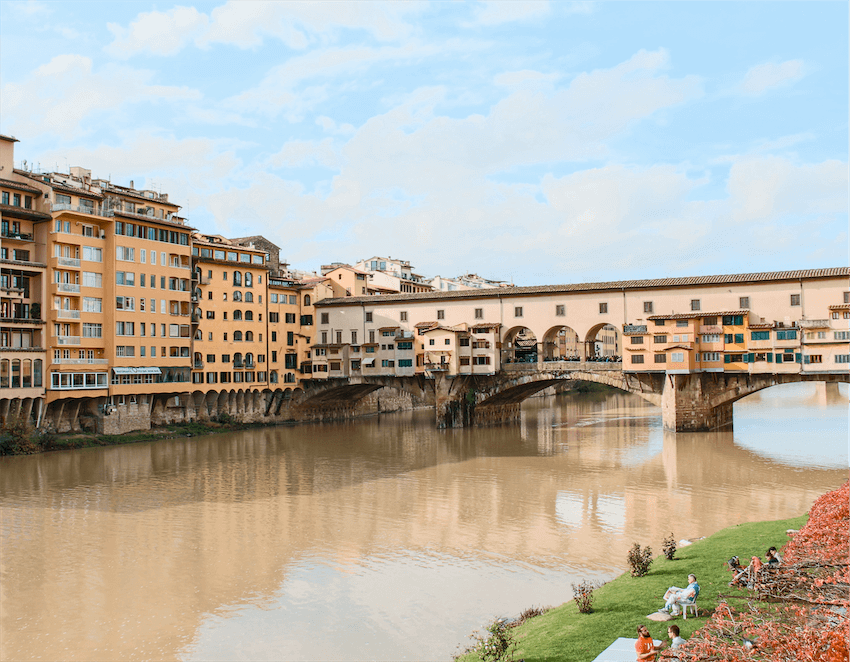
Palazzo Vecchio
Palazzo Vecchio is the town hall of Florence located next to Piazza della Signoria. Built in the early 14th century, this building has been the seat of political power since. It, too, is replete with Renaissance artworks like Michaelangelo’s Victory sculpture to Donatello’s Judith and Holofernes.
San Lorenzo
San Lorenzo was the parish church of the Medicis, where 6 of their Grand Dukes were buried. It boasts 15th-century Renaissance Classical architecture. The facade inside was designed by Michaelangelo, while the pulpits in the nave were done by Donatello.
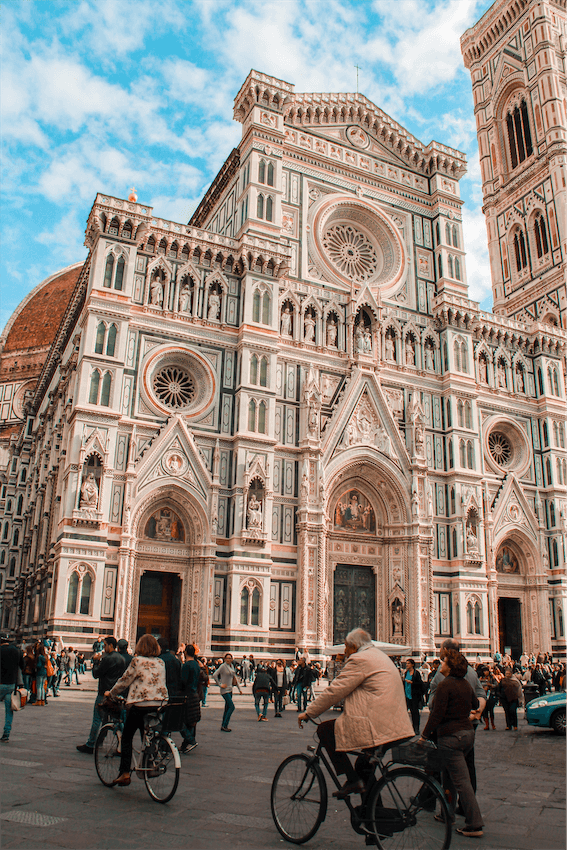
Medici Chapels
The Medici Chapels at the back of San Lorenzo Church contain the tombs of the Medicis. Several of Michaelangelo’s sculptures are found among these tombs.
Museo di Storia della Scienza
Museo di Storia della Scienza is a mecca for lovers of science. This fun museum at Piazza di’ Giudici displays some of Galileo’s scientific instruments and remakes of his previous experiments, as well as other instruments and themes related to science like antique microscopes, barometers, and the like. Also noteworthy to see are the 16th and 17th-century globes that show the movement of the planets and stars.
Inventions by Sir Robert Dudley, an English marine engineer, and Lopo Homem are also interesting pieces to see.
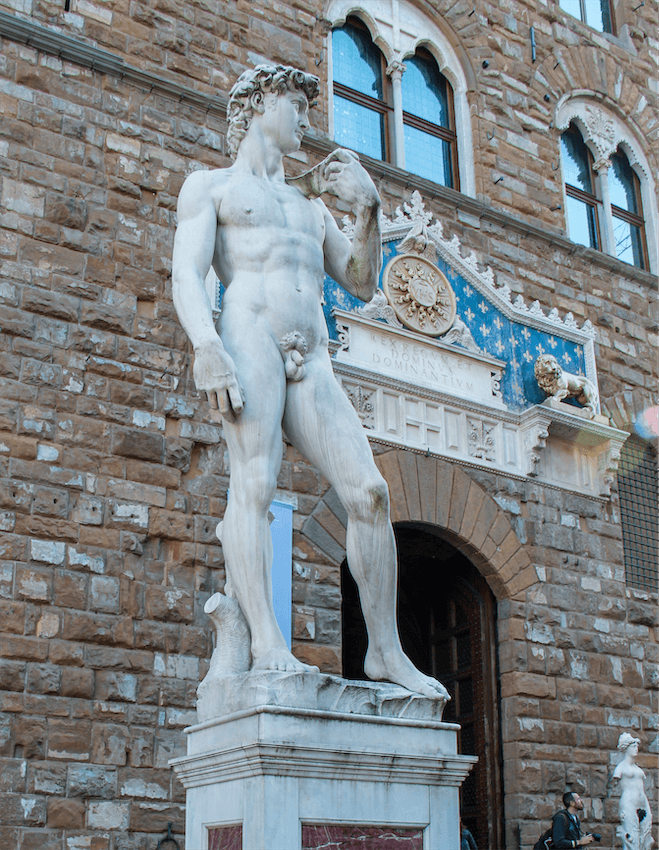
Taste Some Tuscan Cuisine
Sampling some delicious Tuscan dishes is one of the amazing things to do in Florence, Italy. You can treat yourself to a full Tuscan meal–appetizer, first course, main course, etc.–or if on a budget, grab some at a local grocery store. The second option is cheap but still delicious.
Either way, what’s not to miss are the Tuscan bread, cured meats like the exceptional cinghiale (wild boar), local ham and cheeses, crespelle Fiorentine (crepes with cheese and béchamel sauce), and their bistecca Fiorentina, steaks made from local Chianina cow, among others.
Drink Tuscan Wines
Tuscany is known for its excellent wines, so take the time to try some. Worth sampling are its Chianti Classico, Brunello di Montalcino, Vino Nobile di Montepulciano, Vernaccia di San Gimignano (white wine) and Vin Santo.
Florentine Gelato
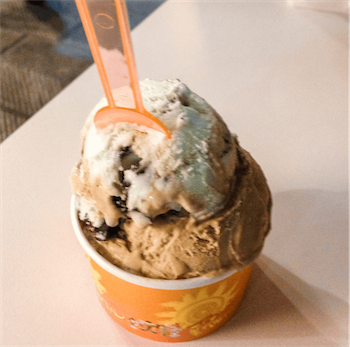
Gelato is a must when you’re in Italy, especially when in Florence, which has its own special brand of gelato–very sweet. Florentine ice cream is famous, so don’t miss it.
Shop for Leather
If you’re in the market for some leather goods at reasonable prices, a visit to Florence’s outdoor leather market near San Lorenzo Church is a good option and one of the fun things to do in Florence, Italy. The leather goods are comparable and may be scored at cheaper prices if you have a knack for effective haggling.
Shop for Italian Brands
If you’re up for some luxury goods shopping, the streets of Via de’ Tornabuoni, Via Strozzi and Via della Vigna Nuova are the places to go. Stores like Gucci, Ferragamo and Pucci line Via de’ Tornabuoni, while other high fashion brands can be found in the latter two.
So those are the top interesting stuff to do in Florence, Italy. For where to stay and guided tours, read below.
Florence Hotels Italy
If you’re looking for places to stay when in Florence, here are some great options. They’re rated highly and located in the center of town.
Guided Tours
Here are some of the best guided tours in Florence that would make your trip more interesting.
Final Thoughts
We hope you enjoy visiting and learning about the culturally rich city that is Florence.
If you find this post helpful, don’t forget to like, save, and share it with others. Thank you for reading, and have happy and safe travels.
Follow me on:
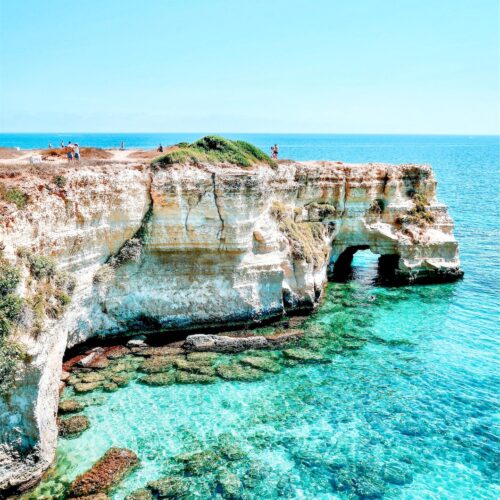
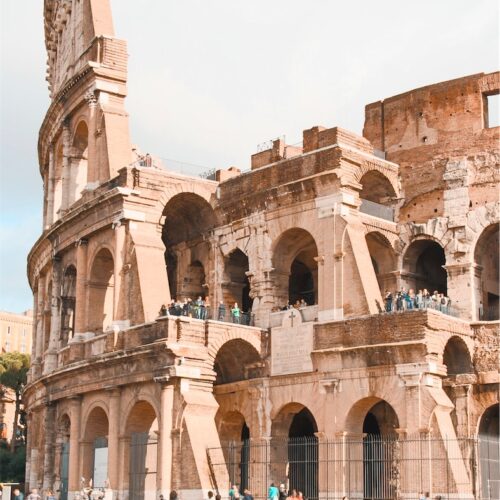
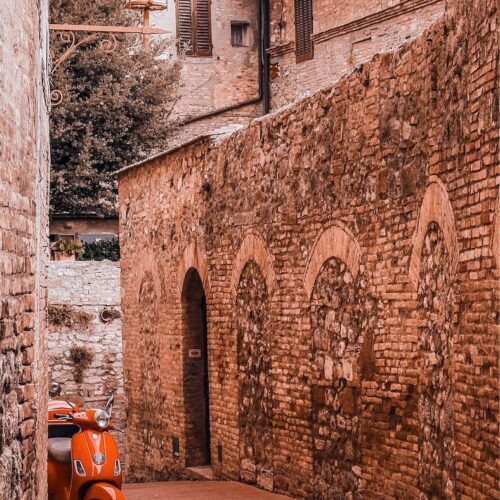

Such a interesting and great read. Thank you for sharing.
Thank you and you’re most welcome!
I’ll keep these in mind! I definitely need to visit Florence at some point!
Thank you! It’s an interesting city to be in.
What a wonderful post, Rosie! Thanks so much for sharing your Florence experience with us, I thoroughly enjoyed reading it. I’ve made starred some locations on our Google Maps for the next time we visit Florence which I really hope is soon because your post reminded me how much I want to return! Keep up the great posts!
Thank you so much and you’re most welcome! I’m glad to know you find it helpful 🙂
My husband and I spent 3 weeks in Italy on our honeymoon several years ago. Florence is an absolute dream (as is the rest of Italy!) There is so much to see and do (and eat!) Thanks for a great trip down memory lane.
“Absolute dream” is fitting! Italy is that exactly. And maybe even more. You’re most welcome; glad I made you reminisce 🙂
I would love to visit Florence! Or anywhere in Italy for that matter.
True, you can never go wrong with anywhere in Italy. The whole country is just amazing!